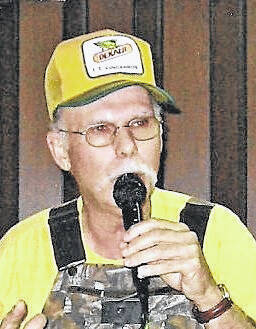One-room schools were about the only option for most rural school children for more than 250 years in our country. That is unless your parents were well off enough to hire a tutor or send you off to a school of higher learning.
Most children only attended school for about four or five months out of the year. Farm work and chores kept the children at home the rest of the time. An eighth-grade education was about as high as most kids accomplished.
Students were taught reading, writing, arithmetic, history and geography all by the same teacher.
Most of these one-room schools were built on the least fertile land in the farming communities. Each school had its own name, often from the family who donated the land. At other times the school was named for local towns or communities. Names like Bostic, Covington or even Possom Tail were just some of the one-room schools located in Richmond County. These small buildings were not just schools, but some were used for church services, town meetings or other community events.
These schools were often crowded, dark, and drafty. Before electricity, all the lighting came from the windows or oil lamps. Why some schools just had windows on one side because folks thought the cross lighting would damage the student’s eyes. To heat the building, a pot-bellied stove was in the middle of the room or in one corner. It might be that according to where the student sat they would either burn up or shiver for most of the day. It also would be the older male students’ job to bring in wood or fetch a pail of water from the local spring or well.
Students’ ages would range from five to sometimes twenty years old and often times they had the same teacher for multiple years. Typically, students were arranged with younger ones in front and older ones in the back.
Students bought their lunches in tins something like a lard pail. The lunches and coats were placed in what was called a cloakroom at the entrance of the building. Just behind the building two johnny houses were built, one for girls and one for boys.
Teachers in the 18th and 19th centuries were usually men, partly because it was thought that a man could handle unruly farm boys better. But by the late 1800s and early 1900s about 70% of the teachers were women. It was a sign of the times that folks thought this job of a teacher fell on the female sex plus they weren’t paid as much as their male counterparts. In some cases, the teachers might start their teaching careers with students older than themselves. The going salary per month seemed to be $30 to $40.
These one-room teachers wore many hats. They were to function as a teachers, nurses, counselors, disciplinarians and janitors all rolled into one job. They were expected to live their own private lives under strict codes of conduct for the rest of the community. If they were to get married they would lose their teaching job because folks thought that it was more important to take care of their own household for their husbands.
By around the 1920s and 1930s, schools started to consolidate, and the days of the one-room schools just played out. A lot of rural farmers had moved to towns and went to work at the many textile mills closer to towns. The states took over the school systems and started building bigger schools. They also started running school buses to pick the students up in the outlying parts of the district.
Time marches on and things change. But I wonder if the taking of prayer out of our schools, not saying the pledge of allegiance and the strict discipline action (paddling) in schools as we once had has mostly been lost with the closing of the one-room schools.
J.A. Bolton is author of “Just Passing Time”, co-author of “Just Passing Time Together,” “Southern Fried: Down-Home Stories,” and “Sit-A-Spell” all of which can be purchased on Amazon or bought locally. Contact him or check-out his books at ja@jabolton.com


